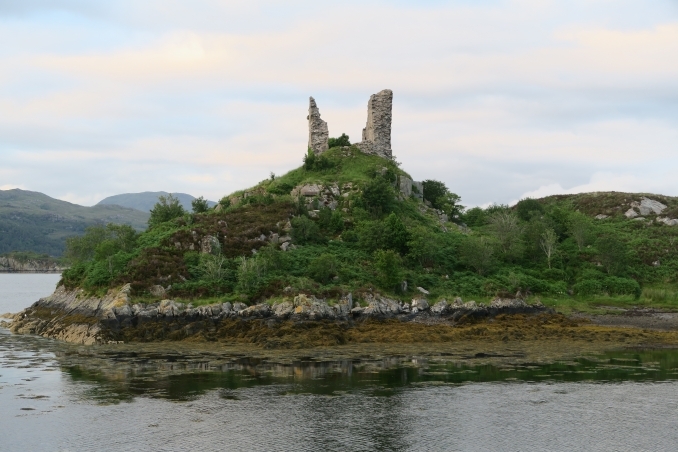Spectacular lightning strike damages legendary ruin of Scottish castle on Skye
Stormy conditions have hit Scotland over recent weeks. Snow and high winds have been causing disruption and during awful conditions on 14th February the ruined castle of Caisteal Maol on the Isle of Skye was damaged by a lightning strike. It smashed the top off one of the two main standing parts of the ruin. In what a witness described as an unnerving combination of lightning, thunder, violent wind and wet snow. There then came a loud thunder crack and a massive fireball. In an instant the floodlights that illuminate the ruin's walls were extinguished.
The castle was built by the MacKinnon's in the late fifteenth century. The ruins sit on a headland above the village of Kyleakin/Caol Acain on the east coast of the Isle of Skye/An t-Eilean Sgitheanach across the bridge from Kyle of Lochalsh/Caol Loch Aillse. Carbon dating from part of the existing remains suggest that the castle that can be seen now was constructed between 1490 and 1513. However, it is possible that another fort stood here before the present structure.
During the late middle ages the castle was known as 'Dunakin'. The western isles of Scotland formed part of the Norse-Gael Kingdom of Mann and the Isles and had strong links to Norway. In 1263 the Norwegian King Haakon sailed with his fleet through the narrows to meet King Alexander III of Scotland at the Battle of Largs.
Legend tells that the castle was built by a Norwegian princess known as 'Saucy Mary' who was married to a Mackinnon chief. It is said that she derived an income by stretching a large chain across the Kyle. She would exact tolls from all ships passing through the narrows except from those from her own land. Upon her death her remains were interred beneath a cairn in nearby Beinn na Caillaich so that the winds from her native land could pass over her final resting place.
Despite this recent lightening strike the ruins of the castle continue to look spectacular. Standing high above the water in a beautiful location, the castle can be reached by a coastal path from Kyleakin.






